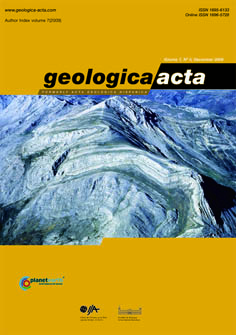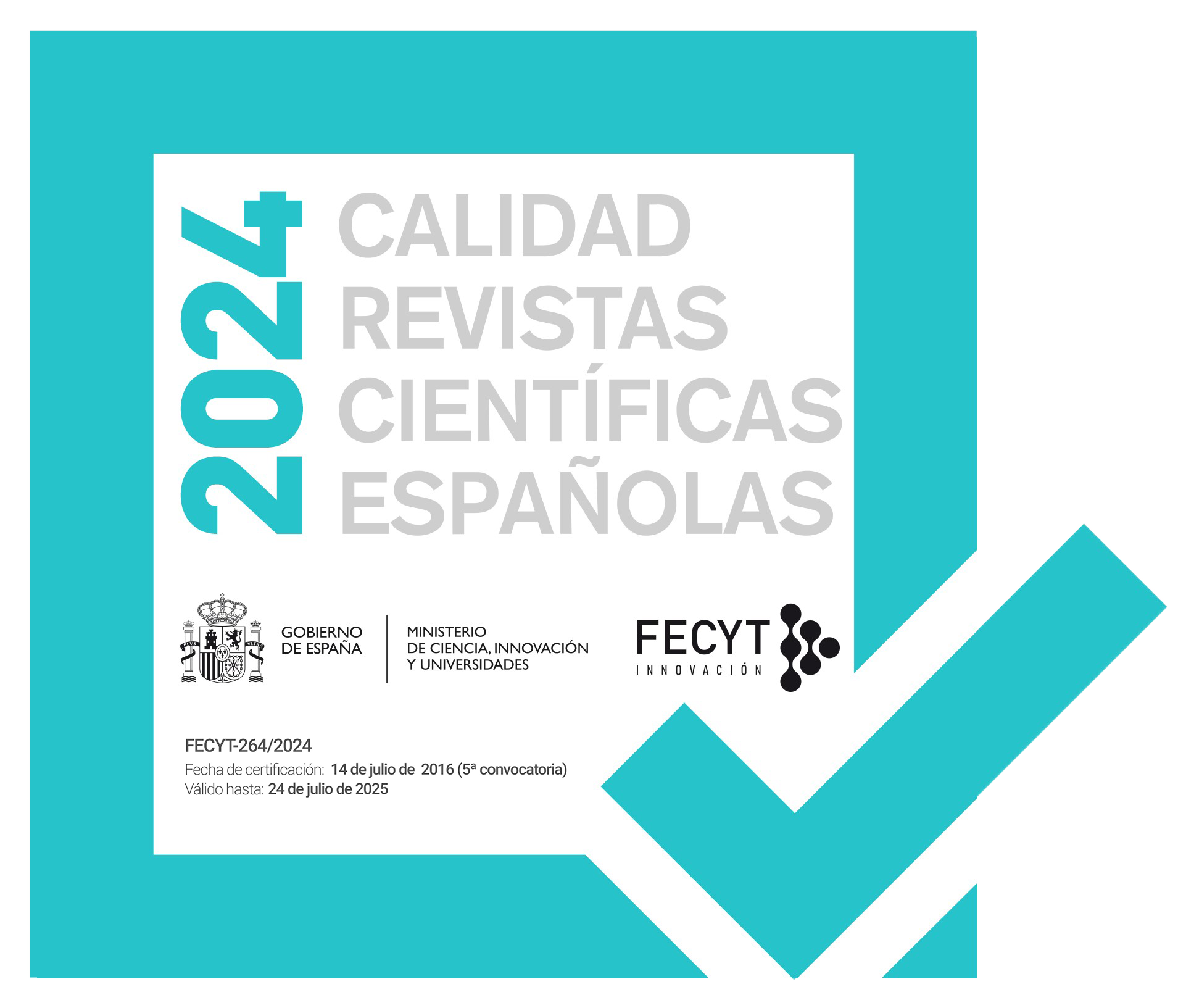Late Miocene karst system at Sheikh Abdallah, between Bahariya and Farafra, Western Desert, Egypt: Implications for palaeoclimate and geomorphology
DOI:
https://doi.org/10.1344/105.000001450Keywords:
Late Miocene, Egypt, Karst, Palaeontology, Palaeoclimatology, GeomorphologyAbstract
The extensive spelean deposits in the Western Desert of Egypt at Crystal Mountain (Gebel Bellorat) are considered to be 11-10 Ma, confirming the ‘Vallesian’ estimate made by Heissig (1982). Several new faunal elements have been discovered including anurans, snakes, soricids, bats, galagids, hystricids and glirids. This fauna indicates that the region was appreciably more humid 11-10 Ma than it is today, with at least 750 mm and possibly as much as 1,200 mm mean annual rainfall. The role of karst processes in the development of the oases of the Western Desert that may have been underestimated by previous researchers is emphasized.
References
Brook, G., Embabi, N., Edwards, R., Cowart, J., Dabous, A., 2002. Djara Cave in the Western Desert of Egypt: Morphology and evidence of Quaternary climatic change. Cave and Karst Science, 29, 57-65.
Coiffait, B., 1991. Contribution des rongeurs de Néogène d’Algérie à la biochronologie mammalienne d’Afrique nordoccidentale. Thèse d’Etat, Université de Nancy I, 382 pp.
Dechamps, R., 1987. Xylotomy of fossil wood from the Sahabi Formation. In: Boaz, N. (ed.). Neogene Palaeontology and Geology of Sahabi, New York, Alan Liss, 37-41.
El-Aref, M., Abu Khadra, A., Lotfy, Z., 1987. Karst topography and karstification processes in the Eocene limestone Plateau of the Bahariya Oasis, Western Desert, Egypt. Zeitschrift für Geomorphologie, 31, 45-64.
El-Sayed, M.I., 1995. Duricrust and karst products in and around Frafra Oasis, Western Desert, Egypt. Sedimentology of Egypt, 3, 27-38.
Faniran, A., Jeje, L., 1983. Humid Tropical Geomorphology: A Study of the Geomorphological Processes and Landforms in Warm Humid Climates. London, Longman, 414 pp.
Fortelius, M., Eronen, J., Jernvall, J., Liu, L., Pushkina, D., Rinne, J., Tesakov, A., Vislobokova, I., Zhang, Z., Zhou, L., 2002. Fossil mammals resolve regional patterns of Eurasian climate change over 20 million years. Evolutionary Ecology Research, 4, 1005-1016.
Freudenthal, M., Mein, P., Martín-Suárez, F., 1998. Revision of Late Miocene and Pliocene Cricetinae (Rodentia, Mammalia) from Spain and France. Treballs del Museu de Geologia de Barcelona, 7, 11-93.
Halliday, R.W., 2003. Caves and karst of Northeast Africa. International Journal of Speleology, 32, 19-32.
Haltenorth, T., Diller, H., 1980. A Field Guide to the Mammals of Africa, Including Madagascar. London, Collins, 400 pp.
Heissig, K., 1982. Kleinsäuger aus einer obermiozänen (Vallesium) Karstfüllung Ägyptens. Mitteilungen der Bayerische Staatssammlung der Paläontologie und historische Geologie, 22, 97-101.
Keller, W.D., 1970. Environmental aspects of clay minerals. Journal of Sedimentary Petrology, 40, 788-813.
Kingdon, J., 1997. The Kingdon Field Guide to African Mammals. London and New York, Academic Press, 450 pp.
Kutzbach, J., Prell, W., Ruddiman, W., 1993. Sensitivity of Eurasian climate to surface uplift of the Tibetan Plateau, Jornal of Geology, 101, 177-190.
Margolis, S.V., Krinsley, D.H., 1971. Submicroscopic frosting on eolian and subaqueous quartz sand grains. Bulletin of the Geological Society of America, 82, 3395-3406.
Mein, P., 1990. Updating of MN zones. In: Lindsay, E.H., Fahlbusch, V., Mein, P., (eds.). European Neogene Mammal Chronology, New York, Plenum, 73-90.
Molnar, P., 2005. Mio-Pliocene growth of the Tibetan Plateau and evolution of the East Asian climate. Palaeontologia Electronica, 8(1), 1-23.
Mücke, A., Agthe, C., 1988. Mineralization, origin and age classification of ferruginized sandstone in the Bahariya Oasis, Western Desert, Egypt: A contribution to the origin of red beds. Lithos, 22, 59-73.
Pickford, M., 1999. Aubréville’s hypothesis of a southwards shift of Africa’s vegetation belts since the Miocene. In: Maes, F., Beeckman, H., (eds.). Wood to Survive, Liber Amicorum Roger Dechamps. Tervuren, Annales des Sciences Economiques du Muséum Royal de l’Afrique Central, 25, 195-212.
Pickford, M., 2000. Crocodiles from the Beglia Formation, Middle/Late Miocene Boundary, Tunisia, and their significance for Saharan palaeoclimatology. Annales de Paléontologie, 86, 59-67.
Pickford, M., 2004. Southern Africa: a cradle of evolution. South African Journal of Science, 100, 205-214.
Pickford, M., Wanas, H., Soliman, H., 2006. Indications for a humid climate in the Western Desert of Egypt 11-10 million years ago: evidence from Galagidae (Primates, Mammalia). Comptes Rendus Palévol, 5, 935-943.
Rohlfs, G., 1875. Drei monate in der Libyschen Wüste. Berlin, Cassel, XI + 340 pp.
Said, R., 1962. The Geology of Egypt. Amsterdam, Elsevier, 377 pp.
Schlitter, D.A., 2005. Order Macroscelidea. In: Wilson, D.E., Reeder, D.M. (eds.). Mammal Species of the World. A Taxonomic and Geographic Reference. 3rd edition, Baltimore, Johns Hopkins University Press, 82-85.
Schuster, M., Duringer, M., Ghienne, J-F., Vignaud, P., Mackaye, H.T., Likius, A., Brunet, M., 2006. The Age of the Sahara Desert. Science, 311, 821.
Selley, R.C., 1988. Applied Sedimentology. London, Academic Press, 446 pp.
White, F., 1983. The Vegetation of Africa, a Descriptive Memoir to Accompany the UNESCO-AETFAT-UNSO Vegetation Map of Africa. Paris, UNESCO, 356 + I pp.
Wilding, L., Smeck, N., Drees, L., 1977. Silica in soils: quartz, cristobalite, tridymite and opal. In: Dixon, J.B., Weed, S.B., (eds.). Minerals in Soil Environments. Soil Science Society of America, 471-552.
Wilson, D.E., Reeder, D.M., 1993. Mammal Species of the World: A Taxonomic and Geographic Reference. 2nd Edition, Washington DC, Smithsonian Institution, 2142 pp.
Wolfheim, J.H., 1983. Primates of the World. Distribution, Abundance and Conservation. New York Zoological Society, Seattle and Washington, University of Washington Press, 300 pp.
Zheng, H., Powell, C.M., Rea, D.K., Wang, J., Wang, P., 2004. Late Miocene and Mid-Pliocene enhancement of the East Asian monsoon as viewed from the land and sea. Global and Planetary Change, 41(3-4), 147-155.
Downloads
Published
Issue
Section
License

This work is licensed under a Creative Commons Attribution-ShareAlike 4.0 International License.
Copyright
Geologica Acta is the property of the UB, GEO3BCN, IDAEA and UAB. Geologica Acta must be cited for any partial or full reproduction. Papers are distributed under the Attribution-Share Alike Creative Commons License. This license allows anyone to reproduce and disseminate the content of the journal and even make derivative works crediting authorship and provenance and distributing possible derivative works under the same or an equivalent license.
Author Rights
Authors retain the copyright on their papers and are authorized to post them on their own web pages or institutional repositories. The copyright was retained by the journal from the year 2003 until 2009. In all cases, the complete citation and a link to the Digital Object Identifier (DOI) of the article must be included.
The authors can use excerpts or reproduce illustrations of their papers in other works without prior permission from Geologica Acta provided the source of the paper including the complete citation is fully acknowledged.




